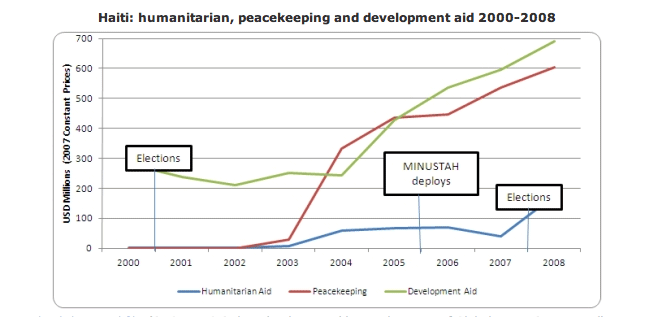Part 3 - Will it work?
A three-week investigation by Haiti Grassroots Watch revealed that – contrary to what the government’s silence might indicate – the non-governmental organizations (NGOs), multilateral agencies and foreign government assistance agencies do have a rough plan for what to do with the 1.3 million refugees living in Haiti’s 1,354 squalid camps.
Part 1 of our series outlined the plan and also at who is implementing it
Part 2 examined the challenges
Part 3 asks “Will it work?”
Recently, Partners in Health co-founder Dr. Paul Farmer, who is also UN Deputy Special Envoy for Haiti, addressed the U.S. Congressional Black Caucus.
Speaking about the humanitarian crisis in Haiti, Farmer noted that
“as physicians, we know that what happened on January 12th is aptly described as an ‘acute-on-chronic’event…. [T]he problems we’re struggling with today are longstanding, if much aggravated by the worst natural disaster to befall the world in recent centuries.”
In 2009, Haiti ranked 149 out of 182 nations on the UN Human Development Index – calculated by taking into account life expectancy, literacy, access to education, healthcare, clean water, GDP per capita and other indicators. Over 70 percent of Haitians live on less than $2 a day.
In 1980, before the Haitian government began to drastically lift tariffs that protected Haiti’s peasants against foreign food imports, about 750,000 people lived in the Port-au-Prince area. Today there are almost 3 million, mostly in seaside shantytowns and hillside slums. People flocked to the capital because of an agricultural system in crisis, a lack of infrastructure and services in other parts of the country, massive unemployment and other economic and social problems.
The “Return and Resettlement Strategy,” with its 135,000 T-Shelters, cash incentives and even the eventual planned neighborhoods won’t address these underlying structural challenges.
“The NGOs don’t have a solution to the country’s problems,” community organizer Sanon Renel told Haiti Grassroots Watch. Renel is a member of FRAKKA, the Front for Reflection and Action on the Housing Issue which is made up of camp committees human rights groups and others.
Indeed, Haiti has lately been label the “Republic of NGOs,” but the hundreds and – by some counts, thousands – of NGOs present in Haiti for the past three decades have not resolved the grinding poverty and other problems which plague the country and her people.

Chart showing humanitarian, peacekeeping and development "aid" to Haiti. Note that in all three cases, a certain amount of that money does flow back to the donor country, or never leaves it. Also much of it does not go to the state, passing instead to NGOs. The total for 2008 was US$175 million.
Source: OECD Aid to Fragile States: Focus on Haiti
“NGOs do provide some minimal services,” Renel continued. “If they weren’t here, more people would have died. But they aren’t the answer. We need more than a short-term solution. We need another kind of state: a state that serves the majority.”
Writing just after the earthquake, Haitian professor Alex Dupuy, professor at Wesleyan University in the US, agreed, pointing out that the high deathtoll was due to “the poor infrastructure, inferior housing construction, and the long-standing disregard for the basic needs and rights of the population.” [our emphasis]
Dupuy lay the blame squarely at the feet of Haiti’s irresponsible “dominant economic and political classes” as well as “the foreign governments and economic actors with long-standing interests in Haiti, principally those of the advanced countries—the United States, Canada, and France—and their international financial institutions (IFIs)—the World Bank, the International Monetary Fund, the Inter-American Development Bank.”
Saying Haiti “needs to break with the policies advocated by the major powers and IFIs that have proved disastrous for the Haitian economy,” Dupuy added his voice to those – inside and outside of the country – calling for the Haitian “people to mobilize as they did in 1990 to change the status quo.”
Part 1 - Who is in charge and what is the plan?

